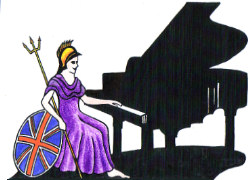Teachers, Accompanists and Piano Entertainers in the UK

UK Piano Page

121-125 Royal Avenue
Belfast, County Antrim BT1 1FF
Northern Ireland
The Belfast music scene has been quietly turning
946-950 Blackpool Rd
Lea
Preston, Lancashire PR2 1XN
England
A&C Hamilton Musical Instruments is Located in
Bedford House Bedford Street
Belfast, County Antrim BT1 6GE
Northern Ireland
Exclusive Yamaha and Roland dealer for Belfast. We
15 Leckey Road
Ballinderry Upper
Lisburn, County Antrim BT28 2QA
Northern Ireland
A.A Music are a leading supplier of new/used
266 Clyde Street
Glasgow, Lanarkshire G1 4JH
Scotland
Mclaren's is Glasgow's newest piano superstore
Music Festival for performers and guests Our 10th
18-06-2022 12:30PM
The Morecambe Bay Piano Group was set up to extend
11-12-2021 01:00PM
The Morecambe Bay Piano Group was set up to extend
08-01-2022 01:00PM
The Morecambe Bay Piano Group was set up to extend
12-02-2022 01:00PM
Violin
A single violin is made from over 70 individual pieces of wood. the string tension is around 12 LBS compared to a pianos 160lbs on the steels and 20% more on the wound strings.